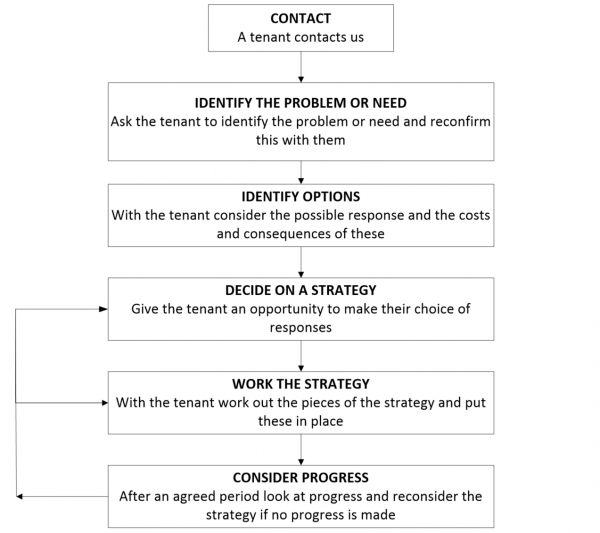If you need help from an advocate
Tenant advocacy aims to empower the tenant
Advocates seek to ensure that people - particularly the most vulnerable members of our community - are able to:
- have their voices heard on issues that are important to them,
- defend and safeguard their rights, and
- have their views and wishes genuinely considered when decisions are being made about their lives.
Because tenancy is a complex subject area, tenants will naturally lean heavily on advice of those more experienced in tenancy matters.
Different approaches to tenant advocacy
Tenant advocates will need to use a mix of approaches to advocacy, depending on the tenant, their situation, and the complexity of the relevant legislation. Different approaches might include:
- Individual or client advocacy - working with individuals on their individual problems and paying less attention to the broader or societal factors influencing a person's position.
- Self advocacy - providing the means for people to advocate on their own behalf.
- Group advocacy - where advocacy is done with, by or for a group of people who share a common interest or need.
Tenant advocacy is usually self-advocacy, as we empower tenants to advocate for themselves wherever possible.
Directive vs Non-directive practice
Directive advocacy
Directive advocacy is where the advocate may be acting for or with an agency which is representing people and their needs. Advocacy in these situations may be directive in the sense that people are led in certain directions, towards a solution.
Non-directive advocacy
Non-directive advocacy is where the person for whom the advocate is working is able to choose their own pathway and solutions with advice and perhaps guidance from the advocate.
However, any particular approach or style of advocacy may involve several elements of these categories. This is true for tenancy advocacy.
By virtue of necessity, tenancy advocacy is a mix of directive and non-directive practice due to an inherent knowledge imbalance between advocate and tenant, and a mixture of client advocacy and self advocacy, because of the legal limits placed on advocates within the Tenancy Tribunal system.
Practice guidelines
Tenant advocacy is a mixture of directive and non-directive practice, from a mixed base of client advocacy and self advocacy.
This approach is partly driven by the legal status of advocates within the Residential Tenancies Act and the fact that tenants often come to advocates with a little knowledge of the law and therefore may need a great deal of support to find a way forward.
Tenancy advocacy always attempts to empower tenants to take control of their housing/tenancy situations themselves. Advocates try to ensure that tenants are making decisions about their future in full knowledge of the facts, law and potential practical consequences. This approach in practice is set out in the diagram below.

Last reviewed on 14 Jan 2021
